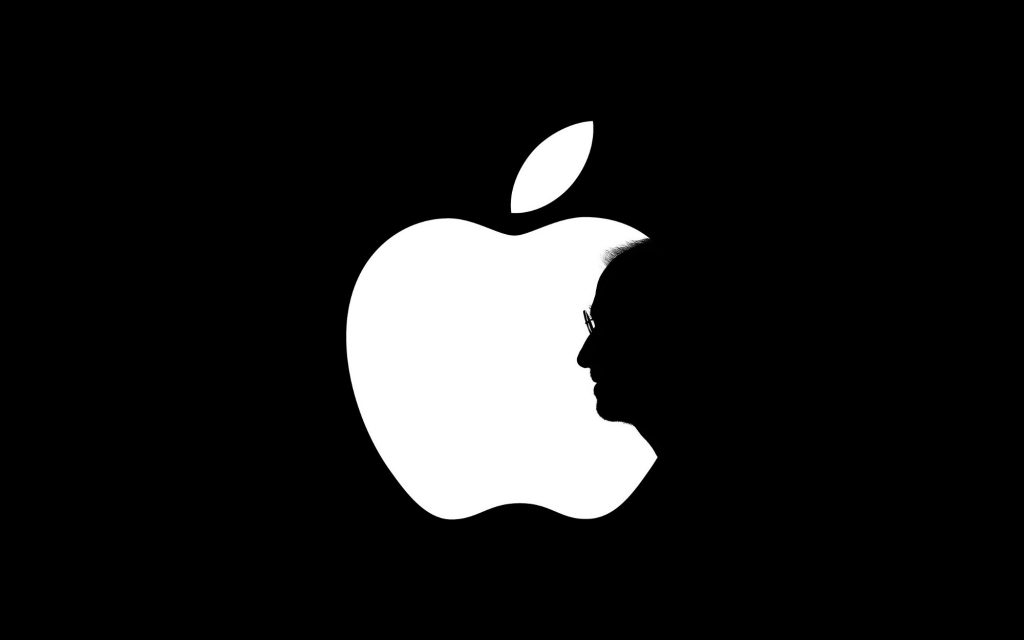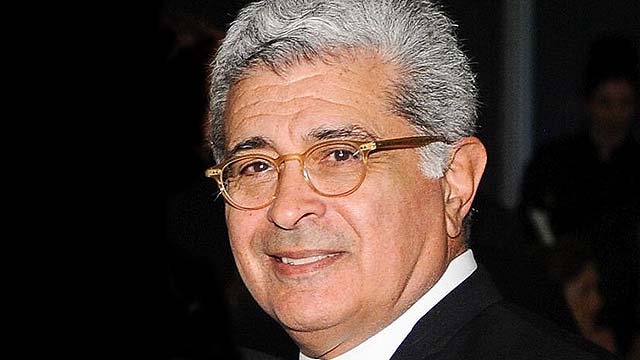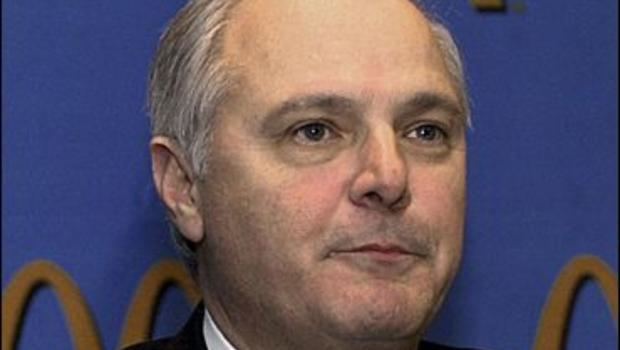Tech
Companies Which Became Successes Despite Almost Failing
Published
6 years agoon

A major chunk of the companies who are successful today have faced their fair share of breakdowns and failures, giving the world the impression they may not recover from the blow. However, with all the effort the CEOs put into bringing these companies back on track, it is noteworthy to see the way these companies have turned out. Here’s a list of companies which bounced back from almost ceasing to exist to becoming one of the most valuable companies in the world.
1. Apple (Steve Jobs)
Probably one of the most successful stories of a startup bouncing back from destruction, Apple had a tough time coming back from the dead. When Apple hired Steve Jobs back as the interim CEO, he turned out to be the man who made the impossible possible. Steve Jobs realised one of the major things going against Apple was they were not thinking of doing something great with the company and were just stuck in the production phase for a long time. The moment he got back as the CEO, the first thing Jobs did was reduce the number of projects from 350 to 50 and then, to 10. A move that made him instantly famous with Apple’s Board of Directors, Jobs joined back as a full time CEO in 1997. Post this, he launched a series of new inventions like the iPod, the first ever iMac, iTunes and the iPhone! Increasing Apple’s stock by more than 9,000 %, Jobs was instrumental in bringing back Apple from near destruction. Today, Apple stands at a valuation of a trillion dollars. Unfortunately, Jobs was diagnosed with cancer and breathed his last in 2011, before he could see Apple become the revolution it is today.
2.Hewlett Packard (Mark Hurd)
When Mark Hurd took over for Carly Forina as the CEO of HP in 2005, he realised the company was in bad shape. At the time, HP had more people on their roster than they knew what to do. Further, this was also the point where HP was recovering from the extremely infamous Compaq acquisition of 2002. Hurd’s first move at ensuring the stability of HP was by decentralizing the staff and increasing the emphasis on field training, improving efficiency and increasing customer support. This move proved to be extremely favorable and from the years 2006 to 2009, HP’s profits increased to $ 80 billion, with the value of the shares doubling from its rate at the point. On a side note, despite ensuring the success of HP, Hurd was forced to step down as the CEO in 2010 post several allegations of sexual harassment.
3. Yahoo! (Terry Semel)
With companies plummeting into sure fire destruction, Yahoo! was one of the websites which suffered the most during the dot com bubble burst. Despite launching to a stupendous fan base before the burst, the mail platform just could not take off the right way. Terry Semel joined the board of Yahoo! as a CEO in the year 2001, with a wealth of experience as the Chairman of Warner Bros. When Semel came on board as the CEO, the company morale was at an all time low and the previous year had ended with a loss of $ 93 million. Semel realised one of the ways to bring back the company was by shifting focus. He changed Yahoo’s business plan and made it a platform which distributed news and user based content through channels like Yahoo News, Yahoo Finance and Flickr. Within a year of Semel becoming Yahoo’s CEO, not only was there a massive turn around with an eradication of all the losses, Yahoo! recorded an impressive profit of $ 43 million. With a successful reign of 6 years, Semel stepped down as the CEO in 2007.
4.McDonald’s (James. R Cantalupo)
When James Cantalupo retired as the CEO of McDonald’s in the year 2001, the company realised they needed him far more than they thought. A short year after Cantalupo stepped down as CEO, stocks started plummeting, with customers across the world complaining about McDonald’s unhealthy menu. When Cantalupo joined back as the CEO in 2002, the first thing he did was to introduce a low on carbs menu in select countries. With a focus on consumers who wanted to eat healthier, the menu changed completely and the results of Cantalupo’s efforts were clearly showing. Within a year, the profits increased massively and in the year 2003, McDonald’s recorded a whopping profit of $ 327.4 million, almost a $ 100 million more than the previous year. Unfortunately, before Cantalupo could use his Midas’s touch for good, the highly effective CEO passed away in 2004 as a result of a massive heart attack.
5. Dan Hesse (Sprint)
Dan Hesse came on board as the CEO of Sprint in 2007, a period when the company was majorly free falling into destruction. It didn’t take long for Hesse to realise that the biggest problem Sprint was facing was the fact that consumers thought the prices were extremely high. One of Hesse’s first moves as the CEO was to introduce the Simply Everything plan, a strategy which redefined the way Sprint functioned. However, unlike other turnarounds, it took Hesse quite a while to restructure the profits of this particular company. It wasn’t till 2010, after a series of takeovers by Sprint and the introduction of new plans, that the company saw its first profit. By the year 2012, Sprint had recorded a massive profit of $ 35.3 billion, as opposed to the previous year’s profits of $ 33.7 billion. Hesse still continues to serve as the CEO of the company.
These CEOS have turned the world around and given their contemporaries a new milestone to achieve. Who’s your favourite CEO? Comment and let us know.

You may like
Latest News
Meta’s AI Assistant, Meta AI: Friend or Foe for Searching Giants?
Published
2 days agoon
April 22, 2024
Meta Platforms (formerly Facebook) has introduced Meta AI, an AI assistant, powered by Llama 3 language model, designed to be your one-stop shop for information, chat, and creativity. This means you can get real-time information on Facebook, WhatsApp, Messenger, and Instagram without ever leaving the app!
Meta AI’s search strategy is an intriguing twist. While it may appear to be a competitor to Google and Bing, it contends that Meta AI is not a competitor, but rather a collaborator. Here’s why:
By relying on established search engines as sources, Meta AI positions itself as a user-friendly tool that combines the best of Google and Bing. Imagine getting results from both Google and Bing in the same search. As you are exposed to different points of view, you may gain a more comprehensive understanding of the subject. They’re calling it the “most intelligent AI assistant that you can freely use,” so it will be interesting to see how it compares to other assistants on the market.
How does Meta AI help you?
Search Powerhouse: Meta AI combines Google Search and Microsoft Bing results to provide you with a more comprehensive view of your queries.
Chatty companions: Need answers or simply want to talk? Type “@MetaAI” into Facebook Messenger, Instagram, or WhatsApp and let the conversation begin.
Creative Spark: Feeling artistic? Meta AI allows you to create custom stickers and photos based on your text descriptions.
Where to Find Your Meta-AI Buddy:
- Look for Meta AI in the search bars on Facebook, Instagram, Messenger, and WhatsApp.
- To respond to posts, interact with Meta AI directly in Facebook’s main feed.
- Explore the new meta.ai website for extended conversations.
- Type “Imagine” into your WhatsApp chat to generate real-time images.
- The future may even include access via Meta’s VR headsets and Ray-Ban smart glasses.
The Future of AI Assistants
Only time will tell how Meta AI integrates into our lives, but it certainly offers a glimpse into an interactive future where AI assistants cater to our search, chat, and creative needs. Whether Meta AI becomes a true partner to search giants or forges its own path remains to be seen.
Meta AI promises a brand new way to search and interact with information. Do you think this AI assistant will change the way we use social media? Share your thoughts in the comments below!

The workplace has undergone massive changes in the last century. At the turn of the Industrial Revolution, any workplace was dominated by men while the women were delegated to run the homes. However, with the advent of the internet and new and exciting technologies, workplaces have undergone a tectonic shift. Women are no longer comfortable staying at home and are instead opting to lead teams and organisations. As every year passes, we get closer to true gender equality, women have proven time and again that they are equally capable to get the job done if not better in some instances. Names like Wolfe Herd (Bumble founder,) Kylie Jenner (Kylie Cosmetics founder,) Masaba Gupta (Masaba clothing label founder) are just some of the names who are known for leading world famous brands with their unique style of leadership.
As the world celebrates International Women’s Day, we bring to you five women founders who run world famous and successful startups.
1) Upasana Taku-MobiKwik
If you are an Indian and are used to doing online shopping, more often than not at the time of payment, you would be directed to a payment gateway. One of these gateways would normally be MobiKwik. The startup is a well known name in the digital payments and digital wallet space. MobiKwik was founded by Upasana Taku in 2009, who prior to founding MobiKwik used to work with PayPal. Today Upasana Taku is also in charge of bank partnerships, business operations, and talent acquisition at MobiKwik.
2) Richa Kar-Zivame
An enthusiastic MBA student, Richa Kar, developed an online lingerie shopping platform in the year 2011. Currently, Zivame is India’s leading online lingerie store with a valuation of more than $ 100 million. The brilliant idea for her own lingerie business came to light when Richa tracked Victoria’s Secret’s sales, who was one of her clients when she was working at SAP. She observed the lingerie sales figures reached peaks overseas but, Indian women were not provided with the similar innerwear. While Richa was studying the Indian lingerie market, she realized the social embarrassment in India surrounding lingerie shopping. Today Richa Kar could be credited with destigmatising the uneasiness surrounding lingerie shopping in India.
3) Falguna Nayar-Nykaa
After a long stint as an investment banker, Falguni Nayar founded Nykaa.com in the year 2013. An online one stop shop for beauty products from Indian and international brands, Nykaa changed the world of online shopping. Who would have ever thought buying makeup online would be so easy? Falguni Nayar proved many critics wrong and created a brand new place for people who love experimenting with styles, designs and colors.
ALSO READ: Zivame: Founding Story
4) Sabina Chopra-Yatra.com
Yatra.com is a popular Indian website for making flight and hotel bookings. Sabina Chopra was instrumental in identifying the potential for travel commerce in India and people moving towards cheaper or easier travel. By the time, people started looking to make bookings, Sabina made sure Yatra.com was already in place. Sabina was the former Head of India Operations of eBookers, which is also an online travel company based in Europe. Along with this, she was also working with Japan Airlines which further adds to her experience in the travel industry.
5) Rashmi Sinha-SlideShare
SlideShare allows people to upload and access their presentations online. While this feature is presently available everywhere, SlideShare was one of the first players in making this happen. Rashmi Sinha was one of the founders of the presentation sharing platform SlideShare. The company became so successful that in 2012, LinkedIn acquired the company for an amount of $100 million.
Let us know in the comments if you know any other wonderful women who have become leaders of their right or have started up and are doing extraordinary things. We at Startup Stories wish a wonderful Women’s Day to all the women in the world who are changemakers.
Articles
5 Reasons Why Telegram Founder Pavel Durov Thinks Whatsapp Is Dangerous
Published
3 years agoon
January 25, 2021
Whatsapp found itself in the midst of a public relations nightmare over its latest privacy policy update. Data privacy is currently a widely debated topic worldwide and Whatsapp has found itself in the midst of this debate time and again. However the latest update seems to have irked a lot of people enough for them to make the shift to Telegram and the much recent app, Signal. Telegram Messenger was launched in 2013 and although it is not as well known as Whatsapp, it enjoys quite an amount of popularity owing to its data security and encryption.
Pavel Durov, the founder of Telegram Messenger, is no fan of Whatsapp and he believes Whatsapp is dangerous and not safe. Elucidating more on the topic, Durov made his reasons known in a blogpost he published in late 2020. Here are the five reasons why Pavel Durov thinks Whatsapp is dangerous.
1) If Jeff Bezos’ phone can be hacked via Whatsapp then nobody is safe.
One of the richest men in the world and the founder of Amazon, Jeff Bezos’ phone was allegedly hacked by Mohammed Bin Salman, the crown prince of Saudi Arabia. Some of Bezos’s private communications and images were taken during the hack following which Whatsapp’s security was questioned.
2) The United Nations recommends its officials to remove Whatsapp from their devices
The United Nations recommends its officials to not use Whatsapp because it thinks Whatsapp is not a secure mode of communication. In June 2019, a U.N., spokesman Farhan Haq said, “The senior officials at the U.N. have been instructed not to use WhatsApp, it’s not supported as a secure mechanism (sic.)” This directive came when independent U.N. experts found a possible involvement of Mohammed Bin Salman, the crown prince of Saudi Arabia, in the alleged cyber attack of Jeff Bexos’ phone in 2018.
3) End to end encryption does not guarantee security.
Durov says “in their marketing, WhatsApp uses the words “end-to-end encryption” as some magic incantation that alone is supposed to automatically make all communications secure. However, this technology is not a silver bullet that can guarantee you absolute privacy by itself (sic.)”
ALSO READ: Users Flock To Signal Messaging App After Whatsapp’s Latest Privacy Policy Update
4) Chat backups on Android and Apple cloud are not encrypted.
Pavel Durov does not believe chat backups in the cloud are safe and says “Users don’t want to lose their chats when they change devices, so they back up the chats in services like iCloud – often without realizing their backups are not encrypted. The fact that Apple was forced by the FBI to abandon encryption plans for iCloud is telling (sic.)”
5) Backdoors continue to exist in Whatsapp
“There are backdoors. Enforcement agencies are not too happy with encryption, forcing app developers to secretly plant vulnerabilities in their apps. I know that because we’ve been approached by some of them – and refused to cooperate. As a result, Telegram is banned in some countries where WhatsApp has no issues with authorities, most suspiciously in Russia and Iran (sic,)” claims Durov in his blogpost.
As data privacy is becoming more and more important in the current day and age of the internet, we wonder what messaging application is totally safe.
Recent Posts
- Meta’s AI Assistant, Meta AI: Friend or Foe for Searching Giants?
- Discover Kheyti, The Startup Changing The Lives of Farmers In India
- Suki: This Startup Wants To Transform Healthcare With Its Artificial Intelligence Tool
- 5 Successful Indian Startups Founded By Women
- Leher Versus Clubhouse: Which Audio Listening Startup Would You Choose?
- Why Are Ads On Digital Media Failing To Reach The Right Audience?
- Facebook Launches BARS For Creating Raps To Counter TikTok’s Growing Popularity
- How Domino’s Pizza Grew 13000% From 2008 To 2020
- Elon Musk Tweets About Bitcoin Bull Run And Loses $ 15 Billion
- Daily Basket Creates BBisabully Over Being Sued By Big Basket Over Usage Of Basket
- Bike Rental Startup Bounce Goes For A Second Round Of Layoffs Amidst Operations Scale Down
- How Parle G Became An Iconic and Well Loved Indian Brand
- Adidas To Sell Reebok Brand Due To Declining Sales
- Carl Pei’s Nothing Invites Retail Investors
- The Incredible Journey Of Wolfe Herd And The Dating App Bumble Which Went Public
- Alphabet Invests In Carl Pei’s Startup Nothing
- Bitcoin Soars As Tesla Purchases 1.5 Billion Dollars Worth Of Cryptocurrency
- From Unicorn To Bankruptcy; Knotel Bears The Brunt Of COVID-19 Pandemic
- The Journey Of Wine Recommendation App Vivino Which Raised 155 Million Dollars In Funding
- How Does Investment Startup Robinhood Make Money?

Meta’s AI Assistant, Meta AI: Friend or Foe for Searching Giants?

Discover Kheyti, The Startup Changing The Lives of Farmers In India












